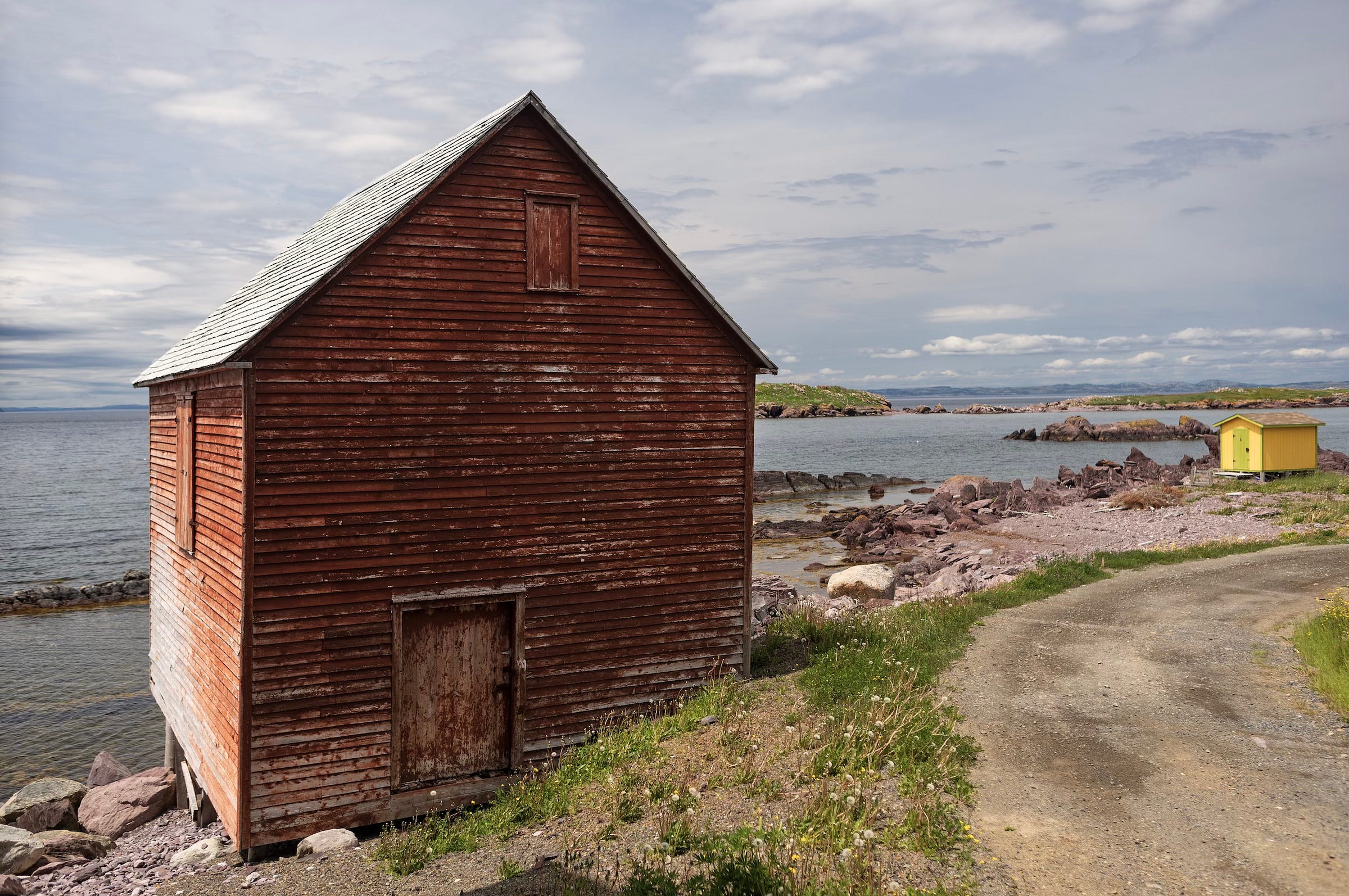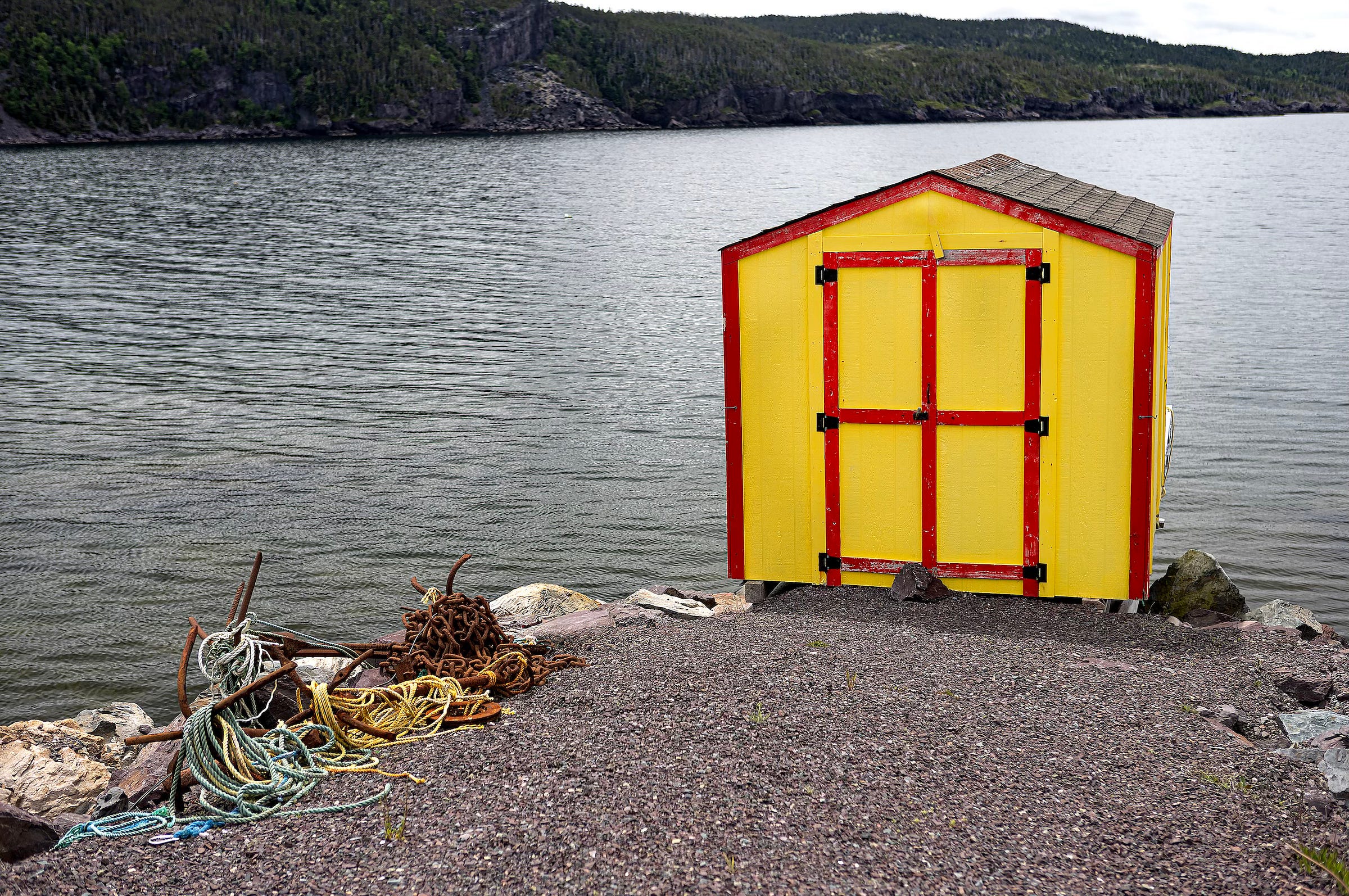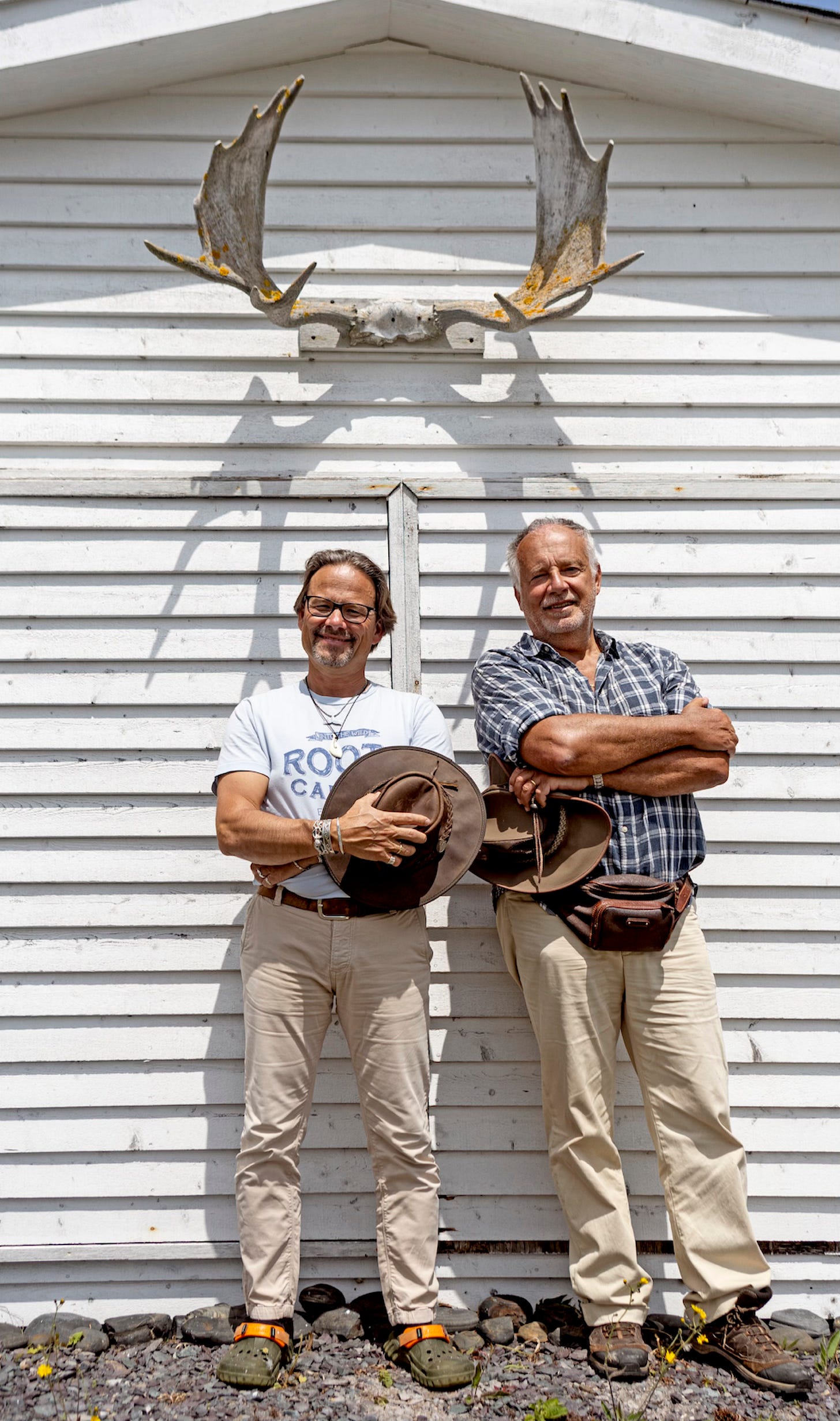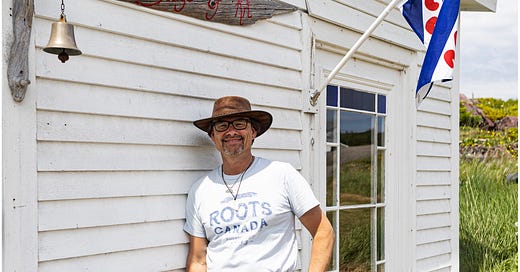Through the Lens (2): Paul Dolk–Summer Whales & Winter Rivers/Paul Dolk-Balene d'estate e fiumi d'inverno
A Dutch wildlife photographer splits his time between Newfoundland's waters and the rivers of Europe/Un fotografo naturalista olandese divide il suo tempo tra le acque di Terranova e il Reno (EN/IT)

For over two decades, Paul Dolk, a Dutch photographer, has spent his summers in Newfoundland, scanning the sea for whales from the deck of his small Zodiac or the patio of his coastal home along the Bonavista Peninsula. What began with a childhood fascination for orcas became a lifelong love of marine wildlife photography. When not in Canada, Dolk works as a cruise director along the Rhine, sharing his passion for wildlife and photography with travellers. Here, he speaks about gear, whales, post-production, and what it means to live between two worlds.
Q: How did you become a wildlife photographer?
It’s a nice story. When I was 10, I saw a documentary about killer whales around Newfoundland. Life went on, of course, but the whales stayed with me—I kept watching documentaries, always fascinated. Then, in 1999, Sandra and decided to get married, and I asked her: “How would you feel about going to Newfoundland for our honeymoon?” And that’s what we did. We first came here in ’99, and in 2003, while touring the island, we bought this house—it had just been renovated by a carpenter. Since then, we’re back every summer.

Q: But you never completely left the Netherlands.
We did consider immigration. At that time, we were 32—I’m 53 now. We had enough points to apply [under the Canadian immigration point system], but we realized living here year-round would be tough. We were already settled in our jobs in the Netherlands. Starting over in a new country wouldn’t be easy. So, we chose to have the best of both worlds.
Q: Do you also work as a photographer in the Netherlands?
No, I was actually an elementary school teacher for 20 years. I quit last year. Now I work as a tour director on river cruise boats along the Rhine. It’s a new job and it suits me really well—I enjoy it a lot.
Q: You get to show your photos there too?
Sometimes. But more often I show passengers the wildlife they can see from the boat itself.
Q: Which river routes do you follow? The Danube?
No, they trained me on the Rhine, so that’s what I’ve been doing. This is only my second season. Eventually, I’d love to expand—do small-ship cruises in the Norwegian fjords. My dream is to go to Antarctica one day as a guide on a boat tour.

Q: How long do you usually stay here in Newfoundland?
When I was teaching, I could take up to 10–12 weeks off each summer—I was a substitute, so I had that flexibility. But now with my new job, this summer we’ll only be here for three weeks. It’s far too short! Sandra and I were just saying that over coffee on the patio.
Q: What’s your daily routine like when you’re here?
I wake up, have my coffee on the patio, and scan the bay with my binoculars—always looking for wildlife. I check the weather, of course. If it’s too windy, it’s not ideal out there, even though my boat—a little Zodiac—is built for rough conditions. But if it’s calm, like today, I head out—sometimes alone, sometimes with Sandra—and I stay out for hours. Whatever happens, happens.
Q: Do you have specific spots where you stop?
Yes, there are a few places where the wildlife tends to gather.
Q: What kind of wildlife do you typically see?
Sperm whales—they’re always around. Even now, in this season, you can see them.
Q: Even from the shore?
Yes, absolutely. And I take pictures. Did you know each whale’s tail has a unique shape and pattern? There’s a whale watching company here—I’m friends with the owner—and they work with a university doing research on humpbacks. They have a catalogue of tail images, and I contribute my photos to it.

Q: Can you recognize individual whales by their tails?
Some, yes. Especially if there are distinctive marks. Other times, I have to check my older photos. Then I share my discoveries with the research team. Once, I took a photo of a whale that hadn’t been seen since 1978—and then it reappeared! That’s quite something. Over time, as the catalogue grows, we are able to track the whales’ ages. Imagine seeing a whale again 60 years after the first time. What a story that would be.
Q: What kind of lens do you use?
I usually use a 70–200 mm lens. You’re not supposed to get too close to the whales—but sometimes, they come right up to you. That lens gives me the right range for most shots.
Q: How close do they get?
Sometimes they’re as close as you and I are now—I could reach out and touch them.
Q: Do you do a lot of post-production?
Not really. I shoot in RAW, so I do some adjustments—maybe a bit more contrast—but I try not to alter reality. For example, in this shot [he points to one of the pictures exhibited in his little gallery], there was a gull sitting behind the whale. I could have removed it in Photoshop, but I didn’t. I like to keep things as they are,
Q: That little white spot by the whale’s tail actually draws the eye. It enhances the stillness.
Exactly. It tells you there’s more going on. That gull was just sitting there quietly while a minke whale dove deep. That’s the kind of detail I love

.
Paul Dolk–Balene d’estate e fiumi d’inverno
Da oltre vent’anni, Paul Dolk, olandese di nascita, trascorre le estati in Newfoundland, scrutando il mare alla ricerca di balene dalla terrazza della sua casa sulla costa della Penisola di Bonavista, a Terranova, o a bordo del suo piccolo Zodiac. Quella che era iniziata come una fascinazione infantile per le orche si è trasformata col tempo in una profonda passione per la fotografia della fauna marina. Quando non è in Canada, Dolk lavora come tour director su navi da crociera fluviale lungo il Reno, dove condivide con i viaggiatori il suo amore per la natura e la fotografia. Chiacchierando nella piccola galleria a fianco della sua abitazione, Paul ci ha raccontato degli incontri con le balene, della sua attrezzatura e pratica fotografica e di cosa significa vivere tra due mondi.
D: Come sei diventato fotografo naturalista?
È una storia particolare. Quando avevo dieci anni mi capitò di vedere per la prima volta un documentario sulle orche al largo del Newfoundland. La mia vita è poi andata avanti, facendo il suo corso. Ma quelle balene mi sono rimaste dentro: ho continuato a guardare documentari naturalistici, rimanendone tutte le volte affascinato. Nel 1999, io e Sandra abbiamo deciso di sposarci e le ho chiesto: “Che ne diresti di andare in Newfoundland per il viaggio di nozze?” E così che siamo sbarcati qui per la prima volta. Poi nel 2003, durante un’altra visita, girando l’isola, ci siamo imbattuti in questa casa che era stata appena ristrutturata da un falegname. L’abbiamo comprata e, da allora, torniamo ogni estate.
D: Ma non avete mai lasciato del tutto i Paesi Bassi.
In realtà abbiamo anche preso in considerazione l’idea di trasferirci. All’epoca avevamo 32 anni—ora ne ho 53. Avremmo avuto abbastanza punti per fare domanda di immigrazione [secondo il sistema a punti del Dipartimento dell’immigrazione canadese], ma ci siamo resi conto che vivere qui tutto l’anno sarebbe stato complicato. Eravamo già ben avviati nelle nostre professioni e ricominciare in un altro Paese non sarebbe stato semplice. Così abbiamo scelto di provare ad avere il meglio di entrambi i mondi.

D: Lavori come fotografo anche nei Paesi Bassi?
No, sono stato insegnante di scuola elementare per vent’anni, impiego che ho lasciato l’anno scorso. Ora lavoro come tour director per crociere fluviali lungo il Reno. È un lavoro nuovo e mi calza a pennello—mi piace davvero tanto.
D: Riesci anche a mostrare le tue foto durante i tour?
A volte sì. Ma più spesso mostro ai passeggeri la fauna che possono osservare direttamente dal battello.
D: Che rotte segui? Anche il Danubio?
No, la mia formazione per ora è sul Reno e la sua fauna, quindi al momento navigo su quel fiume. Sono solo alla mia seconda stagione, e spero in futuro di avere altre opportunità—magari con crociere su piccole imbarcazioni nei fiordi norvegesi. E un giorno vorrei riuscire ad andare in Antartide: è il mio sogno.

D: Quanto tempo passi in Newfoundland ogni anno?
Quando insegnavo, potevo prendermi 10–12 settimane ogni estate—essendo supplente, potevo organizzare la mia disponibilità secondo le mie esigenze. Ora, con il nuovo lavoro, quest’estate staremo qui solo per tre settimane. È un periodo troppo breve… io e Sandra ne stavamo parlando proprio quando siete arrivati [ride].
D: Qual è la tua routine quotidiana quando sei qui?
Mi sveglio, bevo un caffè standomene in terrazza mentre perlustro la baia con il binocolo per vedere se ci sono animali in giro. Prima di decidere se uscire in barca, controllo il meteo. Se è troppo ventoso, ci penso un attimo, anche se la mia barca—uno Zodiac—tiene bene anche con il mare mosso. Ma se la giornata è calma, come oggi, vado sicuramente—da solo o con Sandra—e sto fuori per ore. E, una volta fuori, aspetto che succeda qualcosa.
D: Hai dei posti dove ti fermi regolarmente durante le tue ispezioni naturalistiche?
Sì, ci sono alcuni luoghi dove la fauna tende a concentrarsi.

D: Che tipo di animali vedi di solito?
Megattere—ci sono sempre, anche in questa stagione.
D: E si possono vedere anche da terra?
Sì, assolutamente. E le fotografo anche da qui. Una cosa che forse non molti sanno è che ogni coda di balena ha una forma e un disegno unici. Una compagnia locale che organizza whale watching—il cui proprietario è un amico—collabora con un’università che fa ricerca sulle megattere. Hanno creato un catalogo di immagini delle code, e le mie foto ne fanno parte.
D: Riesci a riconoscere balene che avevi fotografato in passato dalla loro coda?
In alcuni casi sì, soprattutto se hanno segni distintivi. Altre volte devo andare a rivedere i vecchi scatti per esserne sicuro. Poi passo il tutto al team di ricerca. Una volta ho fotografato una balena che non si vedeva dal 1978 e che era ricomparsa decenni dopo in queste acque. Man mano che il catalogo si arricchisce di immagini, diviene possibile anche stimare meglio l’età di questi esemplari. Pensa che storia sarebbe ritrovare una balena sessant’anni dopo averla vista per la prima volta!
D: Che obiettivi usi per le tue fotografie?
Di solito uso un 70–200 mm: è il range di focale perfetto per la maggior parte degli scatti. Non ci si dovrebbe mai avvicinare troppo alle balene, ma a volte sono loro che si avvicinano.
D: Quanto vengono vicino?
A volte tantissimo, come te in questo momento: potrei toccarle.
D: Fai molta post-produzione?
Non molta. Scatto in RAW, quindi qualche intervento ci vuole—un po’ di contrasto, magari—ma non altero la realtà. Per esempio, in questo scatto [punta il dito su una delle foto esposte nella galleria] dietro la balena c’era un gabbiano. Con Photoshop ci sarebbe voluto un attimo per eliminarlo, ma non l’ho fatto. Mi piace lasciare le cose come sono.
D: In effetti, la piccola macchia bianca vicino alla coda della balena attira l’attenzione. E aumenta anche il senso di quiete dell’intera immagine.
Esatto. Ti fa capire che in quell’istante in quel punto non c’era solo la balenottera che s’immergeva. C’era anche un gabbiano che se ne stava lì, da solo, a pelo d’acqua, a osservare la scena. E’ questo il tipo di dettagli che cerco.






Great interview! Paul has taken some fantastic photos of whales and other wildlife